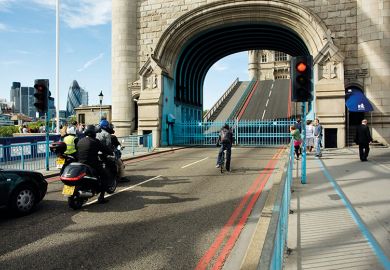In recent years, many countries have considered merging higher education institutions to rationalise systems, reduce costs or improve performance in rankings. But consolidating two or more institutions into a single organisation is complicated and time-consuming at the best of times. When mergers are imposed without prior consent, they can be extremely disruptive – as shown by Armenia’s recent experience.
Though a small country, Armenia has a relatively large and complex higher education system. It has 58 higher education institutions (HEIs): 23 public, 26 private, four “inter-state” (co-funded by another state) and five foreign branch campuses – all catering for just 86,000 students. Reform is undoubtedly needed to increase efficiency and effectiveness.
According to the government’s State Programme for the Development of Education of Armenia to 2030, mergers will create between five and eight public universities that are fully state funded – and that are also permitted to charge tuition fees. The aim is that at least four will enter the top 500 in recognised international rankings (no Armenian university is in the top 1,500 of Times Higher Education’s World University Rankings). It is hoped that the resulting boost in prestige for the Armenian system will prompt foreign student numbers to at least double.
In October, the Ministry of Education, Science, Culture and Sports started a legal process to merge the Brusov State University and the Armenian State Institute of Physical Culture and Sports into the Armenian State Pedagogical University, However, this was done in advance of the official adoption of the development programme by the National Assembly and the preparation of a comprehensive consolidation plan for all HEIs – or even the publication of guiding principles. No strategic, financial or risk analysis was carried out and, most significantly, the ministry neither negotiated with the affected HEIs nor consulted stakeholders. The draft “decision of government” was submitted to the ministries of finance and justice for their opinions, but via an instrument that avoids the need for public discussions.
The rectors of the affected HEIs had been informed of the plan in August by the minister, but the meeting was unproductive and counterarguments about the fundamental differences among the institutions and their fields of study were disregarded. No justification or explanation was offered for the selection of the specific HEIs or the hasty time frame.
Moreover, it was not until 11 October that myself, university staff and students at Brusov first learned – from state representatives on our management board – that the legal merger process was already under way. This information rapidly spread, raising anxiety and resentment within the university community. Two open sessions of the academic council were held, which the minister declined to attend. In a very tense atmosphere, students and staff expressed their concerns about the purpose, justification and likely negative outcomes of the merger. They also voiced their dissatisfaction at the process’ secrecy.
The students announced a strike and, during 10 days of protest, thousands of them, together with academic and other staff, marched to the ministry chanting anti-merger slogans. A letter was submitted to the prime minister signed by almost 4,000 Brusov students and staff requesting the suspension of the process and the formation of a working group to develop a comprehensive programme for increasing quality in Armenian higher education – including, if necessary, an evidence-based consolidation plan for HEIs that took into account the views of key stakeholders.
On 21 October, a university delegation comprising myself, staff members and students met the deputy prime minister. We were finally heard and the merger decision was suspended. Assurances were also given that the opinion of students and staff would be taken into account before the plan goes ahead. Afterwards, a working group was set up by the prime minister to explore system optimisation, including mergers, based on data analysis.
During this difficult episode, confidence in the minister’s willingness to look at the evidence and consult with stakeholders has been eroded, and trust among the three affected institutions has been undermined. A new minister was appointed recently. Hopefully, approaches will be reconsidered. The ultimate lesson is that every step in a merger process should be transparent and inclusive – because forced mergers are unlikely to succeed.
Karine Harutyunyan is rector of Brusov State University.
后记
Print headline: No transparency, no merger




